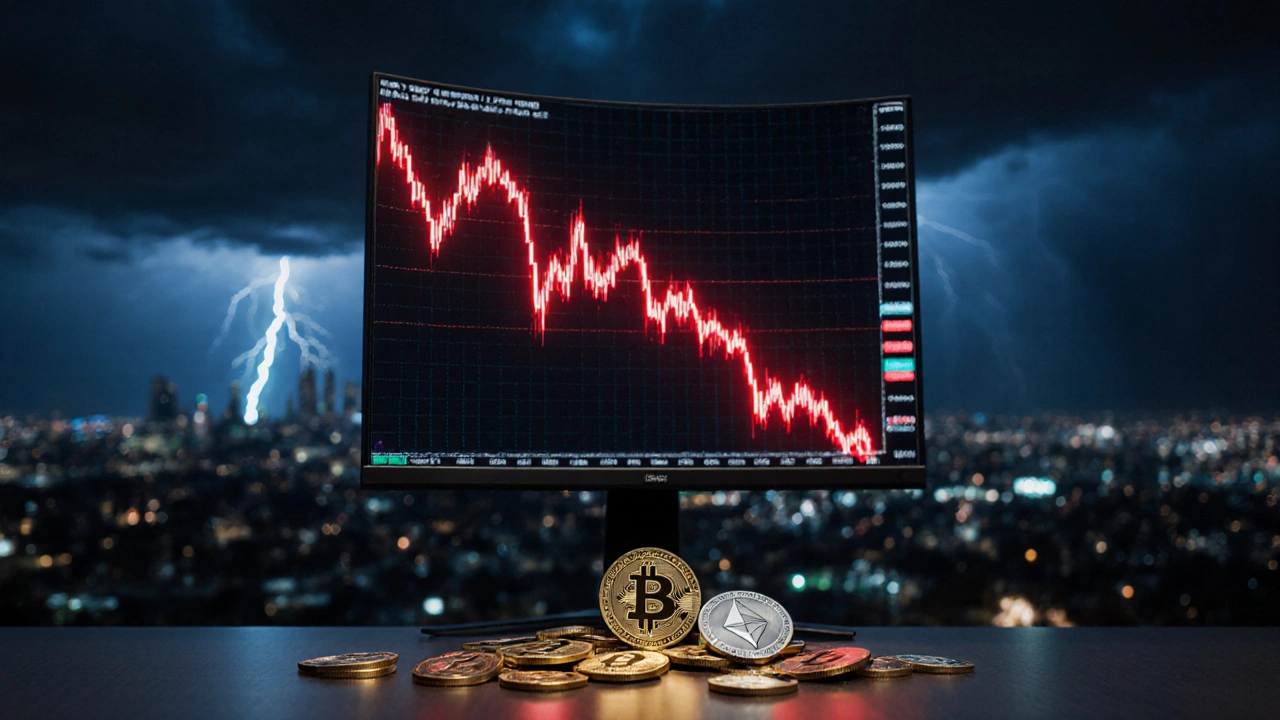Crypto Price Collapse
When the market experiences a Crypto price collapse, a rapid, steep drop in cryptocurrency values that can erase billions of dollars in minutes, investors feel the heat and many wonder what went wrong. The phenomenon encompasses extreme volatility and often spirals from a mix of panic selling, regulatory shocks, and technical glitches. To get a grip on why it happens, you need to look at the Ethereum blockchain, the decentralized network that powers smart contracts and many DeFi projects. Ethereum’s design means that any flaw in a popular dApp can ripple through the whole ecosystem, influencing price swings. Likewise, how you store your coins matters: a hot wallet, an online crypto wallet that stays connected to the internet for quick transactions can be a gateway for hackers during a market dip, amplifying fear. Then there are the digital assets, tokens, coins, NFTs and other blockchain‑based items that investors trade on exchanges. Their price is tightly linked to the health of the underlying blockchain and the trust users have in the network. Finally, decentralized finance, financial services built on blockchain that operate without traditional banks can accelerate a collapse when liquidity dries up, because borrowing and lending platforms react instantly to price changes. Understanding these connections helps you see why a crypto price collapse isn’t just a random tumble; it’s a chain reaction that involves technology, storage methods and market psychology.
What Triggers a Crypto Price Collapse?
If you’re looking to understand crypto price collapse better, start with the three biggest triggers. First, regulatory news can flip market sentiment overnight. When a major country announces a ban or heavy tax on crypto transactions, traders rush to pull out, creating a sell‑off that spreads across assets. Second, technical failures on key platforms—like a smart contract bug on Ethereum or an exchange outage—can freeze funds and spark panic. Because most DeFi protocols rely on the same underlying code, a single vulnerability can cause a domino effect that drives prices down fast. Third, macro‑economic factors such as rising interest rates or a stock market crash often push risk‑on investors toward safer assets, leaving cryptocurrencies exposed. These forces don’t work in isolation; they interact like a web where each node pulls on the others. For example, a regulatory clampdown can lower confidence in hot wallets, prompting users to move funds to cold storage, which reduces market liquidity and fuels further price drops. Meanwhile, the Ethereum blockchain’s proof‑of‑stake transition, while environmentally friendly, introduced new staking dynamics that some traders misread as a sell signal, adding another layer to the collapse. The result is a feedback loop where fear begets fear, and price charts spiral down.
What can you do when the market starts to tremble? First, keep a diversified portfolio that isn’t overly dependent on a single blockchain or token. Second, use cold wallets for long‑term holdings; they stay offline and are less vulnerable during chaotic price swings. Third, stay informed about the health of the Ethereum ecosystem—monitor network upgrades, gas fees, and major dApp developments—because those indicators often foreshadow broader market moves. Finally, remember that not every dip is a disaster; many price collapses are followed by recoveries when fundamentals remain strong. Below, you’ll find a curated set of articles that break down the Ethereum blockchain, explain hot wallet security, and explore how digital assets and DeFi play into market dynamics. Dive in to get practical tips, real‑world examples, and the kind of insight that helps you navigate the rollercoaster of crypto prices.
5
What Causes a Crypto Market Crash? - Key Triggers Explained
Explore the main factors behind crypto market crashes, from macro‑economics and regulation to liquidity and sentiment, and learn how to spot warnings and protect your investments.
Latest Posts
Popular Posts
-
 How Roommates Can Fairly Share Wi-Fi and Streaming Costs
How Roommates Can Fairly Share Wi-Fi and Streaming Costs
-
 Breakout Indies at the Box Office: How Word-of-Mouth Made These Films Blockbusters
Breakout Indies at the Box Office: How Word-of-Mouth Made These Films Blockbusters
-
 How to Cancel Paramount+: Step-by-Step Guide
How to Cancel Paramount+: Step-by-Step Guide
-
 Data Management: DIT, Backups, and Archival Best Practices for Video Teams
Data Management: DIT, Backups, and Archival Best Practices for Video Teams
-
 Best Educational TV Shows for Preschoolers, Elementary Kids, and Tweens
Best Educational TV Shows for Preschoolers, Elementary Kids, and Tweens



